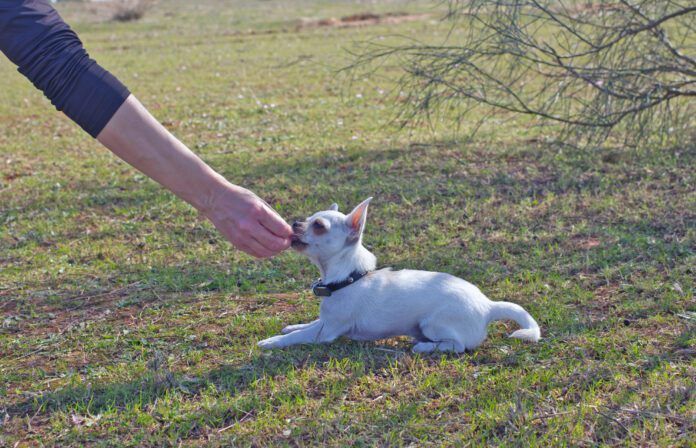Are you having a difficult time teaching your dog to lie down? With some dogs, it’s more difficult than others, but it’s not impossible. The reason is likely that you are not properly communicating what you want. In some cases, however, timid dogs are less comfortable lying down. It’s up to you, as the trainer, to determine where your difficulties lie, pun intended. If your dog is not frightened or worried about life in general or something in the environment, then teaching him to lie down is not difficult.
Many dog lie down as a default versus a sit default. Herding breeds will often lie down without sitting first. The trick is to capture, or “mark,” that behavior if you have been unsuccessful luring it.
By “capturing,” I mean when your dog lies down, say a soft “yes” if that is your marker word (or use a clicker, if that is your normal marker). If you use this marker word to teach new behaviors, that will go into the dog’s mental file of “things Mom or Dad like that I do.” However, that said, if your dog does not have a default down, then luring is the way to start.
Luring Start from Sit
Does your dog already know a sit cue? It’s easy to move to a down from that position. You don’t need them to lie down from a stand in most cases, unless you are competing in obedience.
If your dog has mastered a sit cue, simply place a tasty treat in your hand with your fingers closed, after showing the treat to your dog. Then flip your hand over so that your palm faces the floor. Keep your hand just under your dog’s nose and pretend that there is a string attached to your dog’s nose that you are bringing to the floor. Move your closed hand slightly into your dog’s space while moving downward slowly. Watch their body language to determine whether their body indicates following what your hand is doing or whether they are confused and will begin to stand up.
If they appear confused, lure them to a stand and ask for a sit again and reward that position. If you are down on the floor with them, it’s easier to move your own body in such a way that you are shaping your dog into that down position. If you even get an appearance of a down without the entire body touching the floor, softly say “yes” then and food reward. From there, if you are staying calm, shaping a full down is easy.
Once your dog is luring into a down position (lying down), start adding your verbal cue (most trainers use the word “down”) as you repeat the hand lure action and treat the dog for lying down.
Eventually, with consistent repetition and daily short training sessions with lots of rewards, your dog will learn to lie down on cue. Many dogs lie down on just the verbal “down” cue, while others learn to down with either the verbal and/or a hand cue that indicates down.
A Little at a Time
The trick with teaching your dog to lie down—or anything else for that matter!—is to not push your dog into frustration. Do this in tiny increments and stop before frustration sets in. Try again later. Short training chunks are better than one long frustrating on both sides training sessions.
Many dogs are more comfortable being lured into a down while on a raised soft surface. Even their own dog bed can suffice for such an endeavor. Once you get the behavior to appear reliability, that is when you add the actual word cue of down just as you are luring it and just before you verbally mark it. Or whatever you wish you call it. Have fun while teaching your dog so that you both enjoy the journey.
And, remember, once your dog learns to lie down on cue, you still should reward the behavior as often as possible to reinforce the cue throughout her life.
Caption: Teaching your dog to like down requires short, consistent training sessions and lots of high-value treats.






